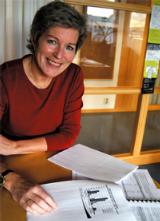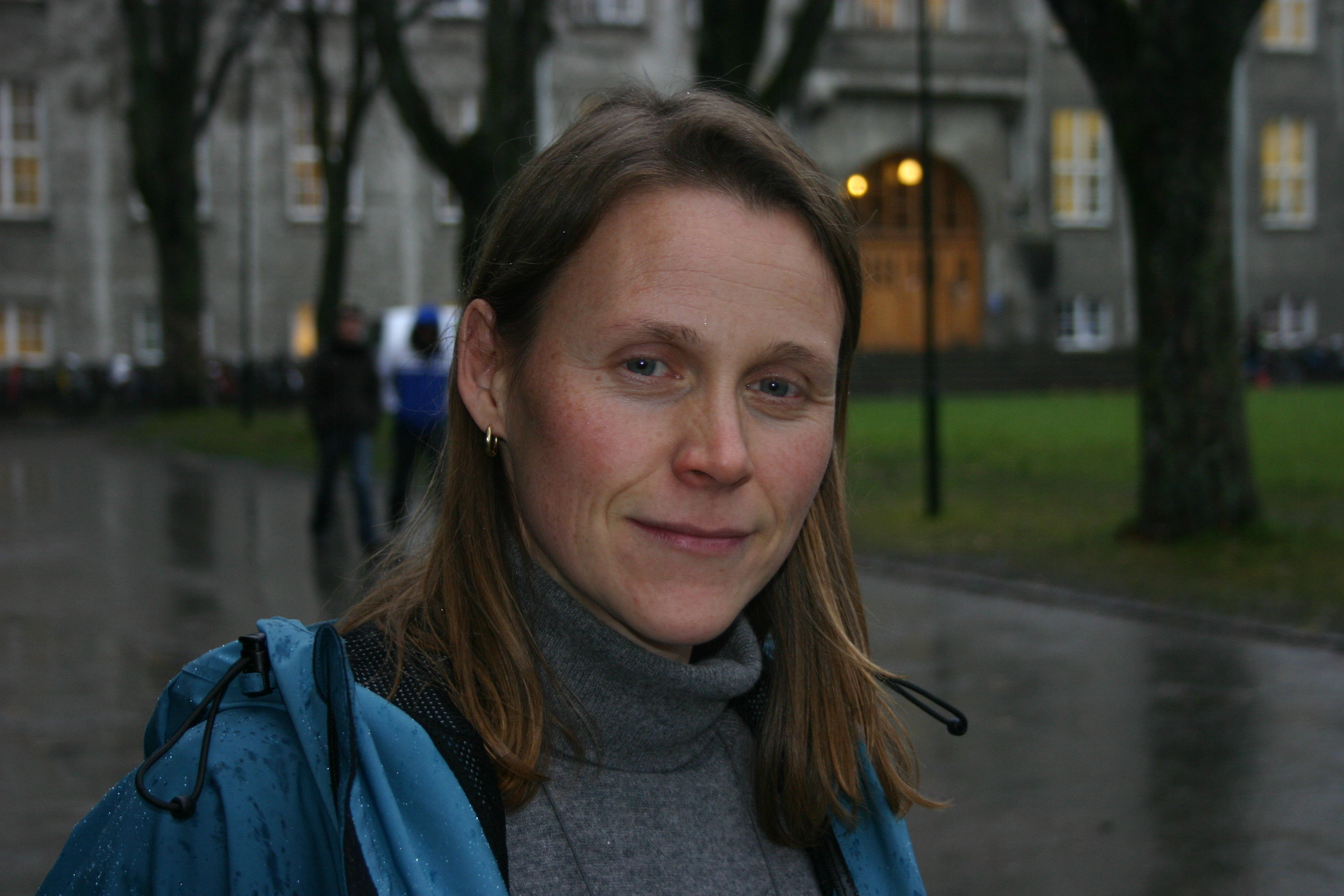Invisible innovation
Numbers suggest that women are lagging behind in Norwegian innovation. A narrow and outdated definition of innovation explains why, says Elisabet Ljunggren at Nordland Research Institute.

Women are in fact eager entrepreneurs, it is just not considered to be innovation, says Ljunggren, whose doctoral thesis is on entrepreneurship and gender.
Clear numbers
Surprisingly enough, there are no statistics that show how many women and men who have patented their inventions at The Norwegian Industrial Property Office. According to Elisabet Ljunggren, there is a general lack of figures and facts surrounding women and innovation in Norway.
"This is knowledge that no one wants to pay for, but which many people are interested in," she says.
However, some randomly collected figures show a clear tendency.
- From Birkeland Innovation, a technology transfer office that helps researchers at the University of Oslo to commercialise their results:
Numbers for 2006 show that 65 ideas were handed in by a total of 112 individual researchers. Of these, 23 were women.
The numbers for 2007 (in November) are approximately the same. 99 people have submitted 60 ideas. 22 of them are women.
In 2006 female innovators made up 20,5 per cent, whereas in November 2007 they make up 22,2 per cent of the innovators.
-
From the SkatteFUNN tax deduction scheme by the Research Council of Norway, where businesses can apply for a tax deduction for their R&D expenses, activities which normally are considered as innovation.
Between five and six per cent of the businesses that apply are headed by women. If you look at the project leaders for the specific projects that seek a tax deduction, close to eight per cent are women.
- Numbers for entrepreneurship point in the same direction. The ratio of female entrepreneurs has remained 25 per cent for the last 15 years. However, in 2006 the number rose to 32 per cent.
Elisabet Ljunggren, who has been watching the development in Norway since 1995, says it is too early to say whether the 2006 figures merely is an anomaly or a persisting trend. She points out that while her research concerns entrepreneurship and the forming of companies, there is a clear parallel between this and innovation.
"Both entrepreneurship and innovation are gendered. They are connected to masculinity. Figures show that women are less innovative, but I think that is due to our definition of innovation," says Ljunggren.
Women give birth

Kathrine Myhre, Director of Innovation at Birkeland Innovation, disagrees. She states that gender is not the main concern when they look for bright ideas that can be commercialised.
"Successful innovation requires high-quality research on an international level. When Birkeland looks for potential projects, this is one of the most important factors," says Myhre.
"The fact that more men than women submit their ideas is probably a result of the same mechanisms which cause more men to become researchers. For instance, it is women who give birth," she says. She believes that women researchers may feel that motherhood conflicts with an otherwise tight schedule.
"In those cases where the management backs up innovation and the researchers get the time and opportunity to work on innovative projects, we see that women too participate and come up with good ideas."
Requires certain qualities
"To be a good innovator you need to possess certain qualities. You need to believe in yourself and your ideas and you must be a driving force throughout the process. This goes for both men and women, and I haven’t noticed any difference between the genders amongst those who have worked with us and developed their research results into a commercial product," says Myhre.
Myhre says that Birkeland Innovation, which was formed on January 1 2004, so far has focused on the academic fields that traditionally have been most active in innovation and patenting, namely the Natural Sciences and medicine.
"It is mostly men who work within these areas; a fact which is reflected in our figures. We are now working to gain knowledge on innovation within other academic fields, where we might encounter more women."
Myhre does not dismiss the idea of implementing measures to attract more women.
"Birkeland Innovation would have welcomed public grants, also to the Oslo area, for this purpose," says Myhre.
Men more active

Ragnhild Rønneberg, director of the SkatteFUNN and VRI programme in the Division for Innovation at the Research Council of Norway, is disappointed and surprised at the figures for her own programme, SkatteFUNN.
"I have to admit that I thought the 80-20 rule applied here as well. That less than eight per cent of the projects accepted by SkatteFunn are led by women, is disappointing," she says.
Rønneberg can only guess at the reasons for this. She mentions the male-dominated business world, that women tend to be more reticent, that they often are too hard on themselves and may feel that applying for public grants is an admission of failure.
"But it might also be that many women work in areas in which research development is not a priority. Thus fewer women boast their projects in competitive arenas. This might limit their possibilities to make money off their ideas."
6,5 million for innovation measures
As part of the Ministry of Local Government and Regional Development’s programme to back female entrepreneurship and innovation, which recently was presented by the new minister Magnhild Meltveit Kleppa, the Research Council’s VRI programme has received 6,5 million kroner.
"It is a small sum and we are now discussing how to make the most out of these means," says Rønneberg.
The money can be used to promote innovation amongst self-employed women and to conduct research on why the differences between the genders are so vast and how the gap might be closed, she explains.
The director believes that financial support is important to encourage more women to be innovative and create their own jobs. But counselling, recruitment of girls to the Natural Sciences and good role models are equally important.
Unnecessary to be a risk seeker

Lise Lyngsnes Randeberg, mother of three and a researcher at the Institute for Electronics and Communication at NTNU, is one such role model.
She recently received the Young Innovators Award for having developed a product that dates bruises. This may help solve murders and assault cases more quickly. A patent application has been filed, and Randeberg and her colleagues are now determining the future of the product.
"A friend of mine who does a lot of innovation got me started. Without him I wouldn’t have thought of it. I was only concentrating on the science part," says Randeberg, who thinks the focus should be on the job a person does, more than on the difference between the genders.
"Personally I actually know more female than male innovators, but I guess that is why I keep in touch with these women. To the extent that women are less innovative than men is a matter of definition," says Randeberg.
"It is very important to inform people of what innovation really is and to show some real life examples. What kind of ideas can be developed? I think many people are unsure of this."
Randeberg also wants to convey that you don’t have to be a risk seeker to be innovative. "I am certainly not one," she laughs.
Other measures are needed
We must expand the understanding of what innovation is, says Elisabet Ljunggren.
"There are many different types of innovation; it is only a matter of noticing them. Within the service sector there is constant innovation, and with many women employees in this branch one would think that they are responsible for a lot of it."
Ljunggren therefore welcomes the VRI money that is to promote female innovation.
"Such measures are important, and the Ministry of Local Government and Regional Development’s support programme for women is good. Making demands on Innovation Norway and the Research Council works. But one might question their allocations for this purpose. In 2008 the ministry wants to spend 16,5 million kroner to promote women entrepreneurs. Last year Sweden granted 100 million to the same cause," says Ljunggren.
"But the grants and the ministry’s action plan for women entrepreneurs is a start. To encourage female innovation we need other measures than male-oriented ones like SkatteFUNN," the researcher says.
"One method is to promote innovation within the female-dominated fields," she says.
New innovation report
In 2008 the Ministry of Trade and Industry will present Norway’s first Government report on innovation policy. Will gender be a central element? That remains to be seen.
Around 90 different institutions have contributed with comments for the report. These can be found on the ministry’s web pages. A quick review shows that few of them are concerned with gender. Not even Innovation Norway mentions this aspect. The Research Council has not submitted its comments yet.
Translated by Vigdis Isachsen
